It is numbers and mathematics that help understand animal coats and the way leaves grow on plants, says S.Ananthanarayanan.
Evolutionary biologists have explanations for why animals have patterns on their coats or even birds on their wings, but the mechanism by which the patterns actually come about has not been understood. The legendary Alan Turing created a mathematical framework of how chemical interactions could lead to periodic expression of growth factors, but it took many decades before possible substances involved could be identified.
Patterns on the coats or animals are a familiar sight and clearly help the animal to blend with surroundings, for concealment, for safety or for greater stealth in the hunt. It is not difficult to understand that chance appearance of features like the stripes on the tiger or the zebra or the spots on the leopard would have conferred a survival advantage, and genes that made for these features soon became the rule for the species. But genes lead to particular proteins and tissue types, how do colours get distributed? How in fact, does tissue grow in specific shapes and how do patterns, or even limbs, grow in specific directions?
In a celebrated paper of 1951-52, Alan Turing considered a simplified case of just a few cells and how chemical agents within the cells may interact and diffuse from one cell to another. He considered first a case of just two cells and then, a case of a ring of cells, where agents that he called morphogens, or ‘generators of form’, would interact and then diffuse from cell to cell at different speeds, reinforcing or cancelling their effects at different places. He simplified the case to be studied so that the mathematics of the way mechanical or electrical disturbances spread could be applied to the progress of morphogens and he found that the effects of the chemical agents manifested in waves, with crests and troughs, just like waves in a vibrating string or electromagnetic waves.
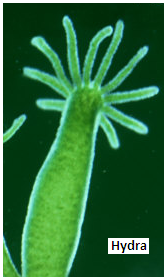
The theory, when applied to the animal called the hydra, a simple, tubular animal which has a ring of tentacles at one end, led naturally to the regularly spaced concentration of morphogens in the ring that forms an end of the hydra, to give rise to the ring of tentacles. Although without speaking of what the morphogens may be, Turing’s theory of ‘reaction and diffusion’ was able to explain the black and white patches on Friesian cows, which Turing was interested in. The theory was carried forward by others and the stripes that appear on the back of the tiger are now understood as a pattern of pigmentation laid down by periodic waves of diffusion of chemicals in the tiger embryo.
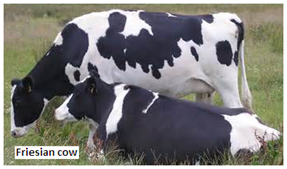
More complex patterns appear by considering more sets of waves. Just as one set of waves can lead to a stripe pattern, like the waves at the seaside, two sets of waves that cross each other would lead to a distribution of points or peaks, leading to a spotted pattern, like the coat of the leopard. The wave pattern is seen to be affected by different factors, which incude the dimensions of the area in which they occur, which determine the ‘boundary conditions’. This, in turn, leads to more conclusions about the spots or stripes on the tails of the great cats. The tiger has stripes on its body and tail and leopard has spots, on the body and the tail. The cheetah has spots on the body and stripes on the tail, but no animal has spots on the tail and stripes on the body. The reason seems to be the space available for two sets of waves, which lead to spots. If these could exist in the tail, for a spotted tall, then they can certainly exist in the body, and the body must be spotted, rather than striped!

Recent studies of the ridges on the roof of the mouth of the common mouse have now identified a hormone called FGF (Fibroblast Growth Factor) and a protein called Sonic Hedgehog as the chemicals involved. Other studies of the shapes of the cactus plant and the role of a hormone called auxin, by Allen Newel at the University of Arizona, have found that three sets of waves could be the reason for cells to grow in particular shapes. Tom W Hiscock and Sean G Megason at Harvard University note that there can be other drivers, besides the Turing process, of periodic phenomena, like cell based mechanisms or mechanical properties, like elasticity, of a system. They have just published in the journal, Cell Systems, an integration of the different models in the form of a combined mathematical formulation to find bases for more features. Why the stripes of the tiger are vertical, while those of the zebra can be both ways, for example, or and even why the fingers grow along the length of the arm and not any other way.
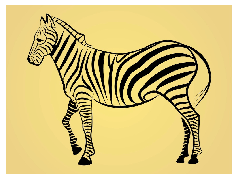
The work of Allen Newel, in fact, connects the waves of morphogens with some fascinating numbers that are found to appear in the plant kingdom. The Fibonacci series is a list of numbers, where each number is formed by adding the previous two, like this: 0, 1, 1, 2, 3, 5, 8, 13, 21, 34, 55, 89, 144….. The interesting property of this series is that ratio of each pair of successive numbers gets closer and closer to 1.61803398874…., the so called Golden Ratio, which appears in geometry, aesthetics, music, art and architecture. The ratio of successive numbers in the Fibonacci series, in fact, gets closer and closer to an infinitely long, non repeating decimal number which actually cannot be expressed exactly as a ratio of two integers (and is hence known as an ‘irrational number’).

Fibonacci numbers are also found to appear elsewhere in nature. A typical instance is the way leaves are placed along the stalk of a plant. The angular separation of the leaves, as one goes up the stalk, is found to form a Fibonacci series. The fact that the ratio of successive numbers in the series tends to be an irrational number has an important consequence – that no leaf in the plant will ever find itself exactly above or below another leaf. This property accurately optimises the function of the leaves to receive the best of sunlight or rainfall, to make for the energy efficiency of natural systems to have evolved to be at the maximum that is possible.
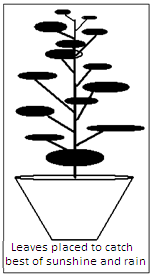
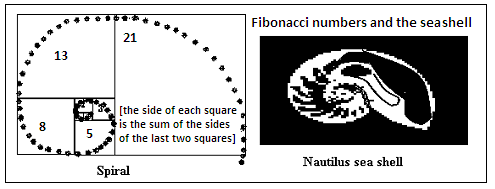
While natural selection can explain how plants, and even snail shells, seashells, and a host of natural shapes have selected the most efficient and economical dimensions, the question always arises of how do species ensure that they grow according to these dimensions. The work of Allen Newel and colleagues provides an illuminating lead – they find that the waves of the three morphogens involved in the cactus plant are connected by the Golden Ratio – the number of wave crests of the third wave is actually the sum of the numbers in the first two waves!
------------------------------------------------------------------------------------------